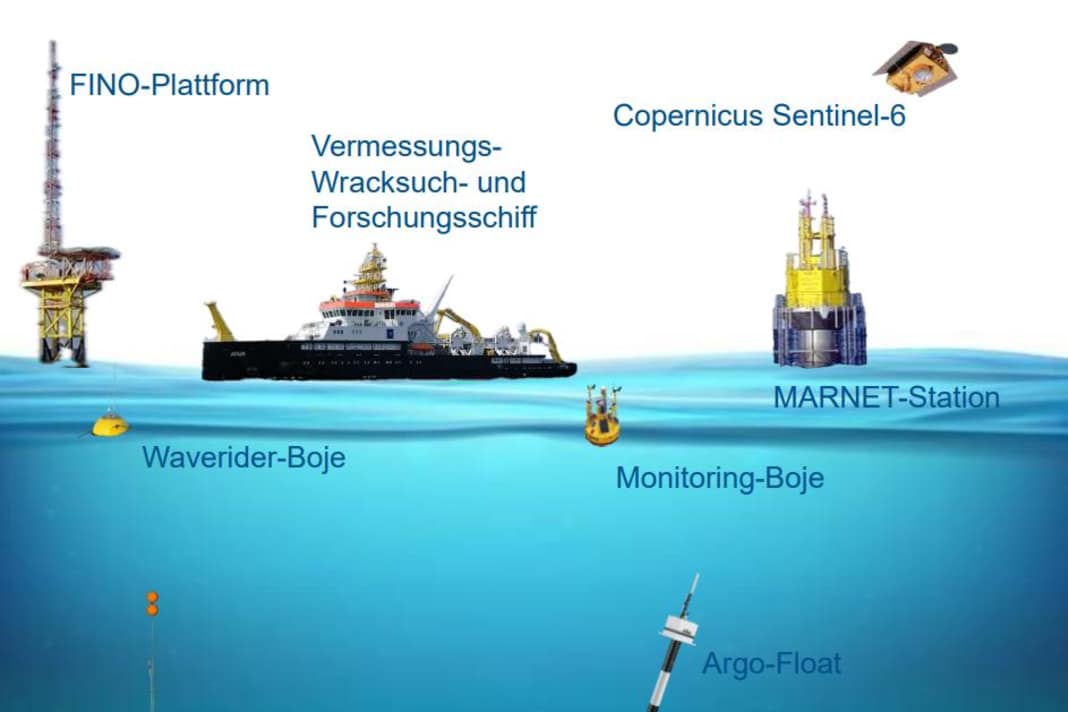





- Record year 2024 for the German North Sea
- Innovative technologies for more precise data acquisition
- Artificial intelligence for greater shipping safety
- Dynamic nautical chart optimises ship routes
- Expansion of offshore wind energy is progressing
- Reform of the German flag state administration
The Federal Maritime and Hydrographic Agency (BSH) is increasingly focussing on high-tech solutions to improve marine environmental monitoring and the safety of shipping. At the 2025 annual press conference, BSH President Helge Heegewaldt presented innovative technologies such as smart monitoring buoys and AI-supported software solutions. At the same time, he warned of the consequences of funding cuts in international ocean research. "Ocean observations are a global task. Funding cuts jeopardise ocean and climate research, but also maritime services such as forecasting services. Europe and Germany should make efforts to compensate for losses in international research and data programmes," emphasised Heegewaldt.
Record year 2024 for the German North Sea
The importance of continuous ocean observations is emphasised by current climate data. The year 2024 was the fourth warmest in the entire North Sea since the start of the data series. The average temperature for the entire North Sea was around 0.5 degrees above the long-term average from 1997 to 2021. The rise in temperature was particularly drastic in the German North Sea, where the values were even up to 1.5 degrees above the long-term average. This means that the German North Sea was warmer than ever before on an annual average.
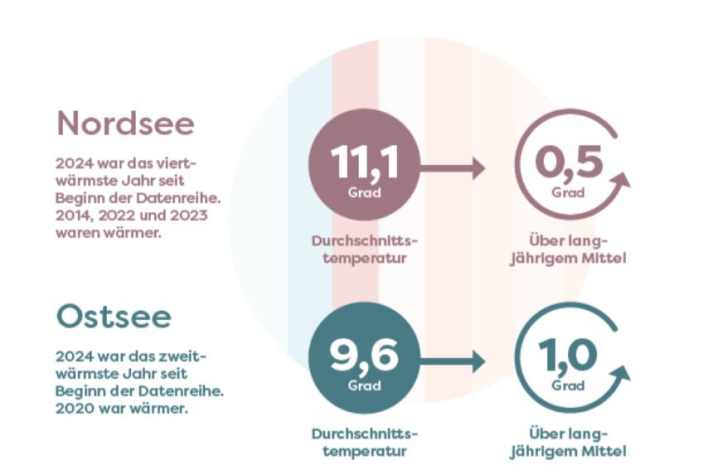
Innovative technologies for more precise data acquisition
To make marine environmental monitoring even more effective and cost-effective, the BSH is planning to deploy smart monitoring buoys. These are intended to supplement the existing stationary measuring platforms in the North Sea and Baltic Sea. "In the future, BSH ships will be able to deploy the buoys, they can be maintained on land and are cheaper to operate. They also provide data from a range of up to 250 metres above the sea to the seabed," said Heegewaldt, explaining the advantages. The buoys record parameters such as temperature, salinity and oxygen content and transmit the data directly to the BSH via satellite. Power is supplied autonomously via photovoltaic modules and wind generators.
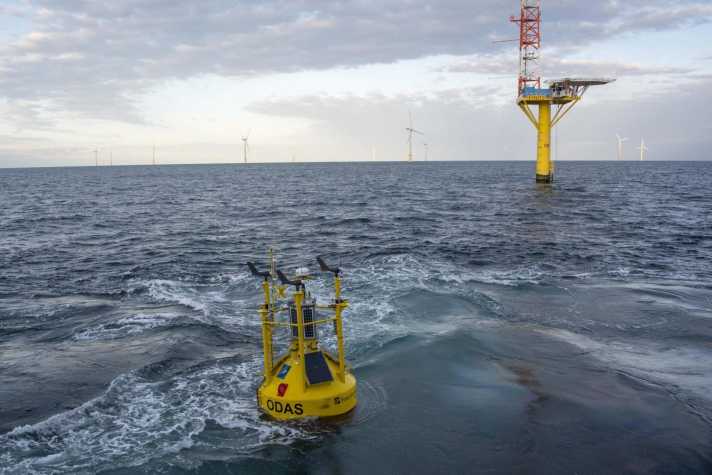
Artificial intelligence for greater shipping safety
Another technological milestone is the use of artificial intelligence to analyse hydroacoustic data. In cooperation with the Leibniz Institute for Baltic Sea Research Warnemünde and the company Subsea Europe Services, the BSH has developed AI-supported software that analyses underwater landscapes and identifies obstacles such as boulders. The software works up to ten times faster than conventional methods and delivers objective results. This is particularly relevant for the safety of shipping, as large rocks can pose a considerable risk.
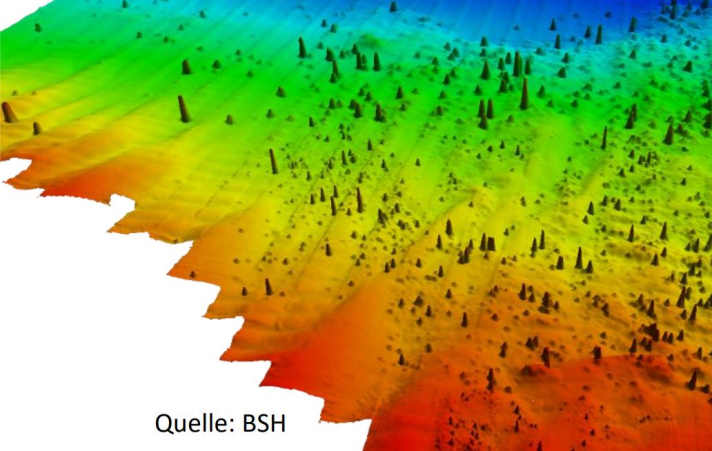
Dynamic nautical chart optimises ship routes
The new high-resolution dynamic nautical chart, which is based on the S-100 standard, promises further improvements for maritime safety and efficiency. By integrating current and water level data in near-real time, ship routes can be optimised. "The resulting fuel savings for ships will reduce the burden on the environment. Shipping companies also benefit as they can plan their routes more effectively and therefore more economically," explained Heegewaldt. The global rollout of the dynamic nautical chart for shipping will begin in 2026, and new ECDIS systems on ships must be able to read the dynamic nautical chart from 2029.
Expansion of offshore wind energy is progressing
In addition to marine protection, the BSH is also promoting the utilisation of the oceans for the energy transition. There are currently 1,637 offshore wind turbines with a total capacity of 9.2 gigawatts in operation in Germany. This corresponds to an increase of 73 turbines and 0.7 gigawatts within one year. With the new 2025 area development plan, the BSH has defined an expansion path for 42 gigawatts by 2034. "The BSH is contributing to the quadrupling of output by 2034 with efficient planning and approval procedures," emphasised Heegewaldt.
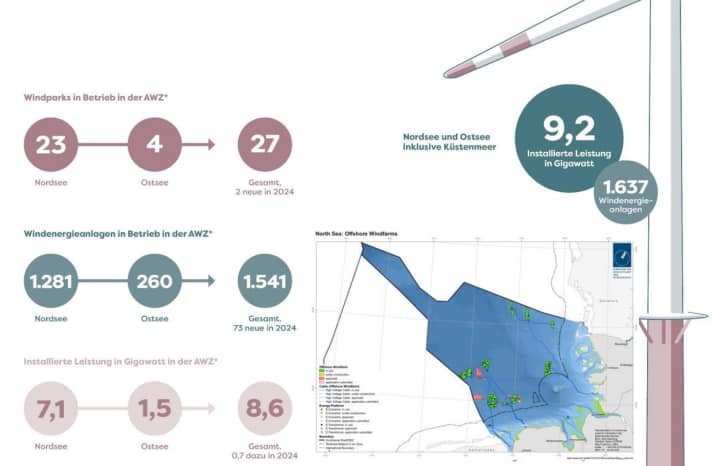
Reform of the German flag state administration
In order to increase the attractiveness of the German flag for shipping companies, the responsible authorities have initiated reforms together with the Federal Ministry of Transport. In future, a central service centre will handle all services for shipping companies and seafarers from a single source in line with the "one face to the customer" principle. In addition, the website www.deutsche-flagge.de will be made more customer-orientated and a standardised digital application for flagging in will be created. The aim is to bring more ships under the German flag. There are currently 258 German-owned ships sailing under the German flag, which corresponds to around 15 per cent.

